The Axe
In order to throw an axe, you first will need an axe!
The best axes to use for throwing will have a sharp edge.
A lot of axes you will buy in a DIY store will come with a splitting edge, which will need to be sharpened before you can use it for throwing.
To gauge the sharpness of an axe, you can use a bit gauge.
The axe bevel then needs to be refined to ensure the correct profile.
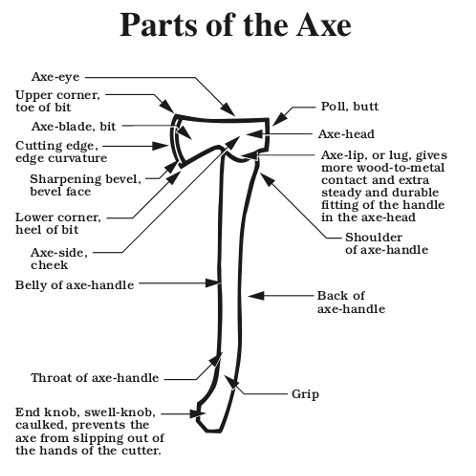

Saving that, just head down to Skeeters, where we have a whole load of axes, sharp and ready to throw!
We use axes with a head weight of 500-1000g which is about optimal for throwing. Anything lighter will be difficult to stick, and anything heavier will be tiring to throw for a long time.
The Target
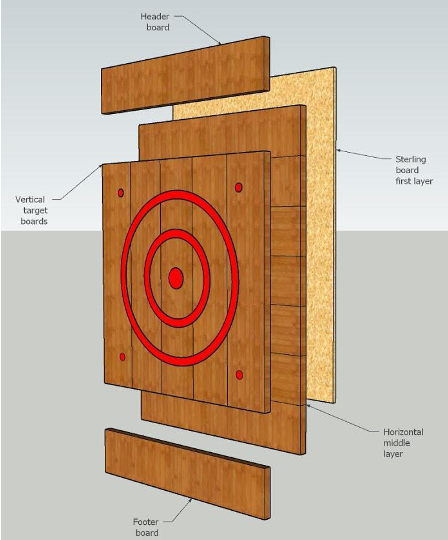
Traditionally targets are made up of 5 vertical boards, covering 5 horizontal backing boards to ensure the rigidity of the target. Above and below the target boards are two capping boards to maintain the integrity of the target, as the boards degrade.
The targets are regularly sprayed with water, to open up the grain, prevent excessive splintering, and enable the axes to stick more easily.
There are two commonly used target designs; WATL and IATF specifications.
IATF: targets have 4 zones: 3 main and 1 extra
WATL: targets have 5 main zones and 1 extra
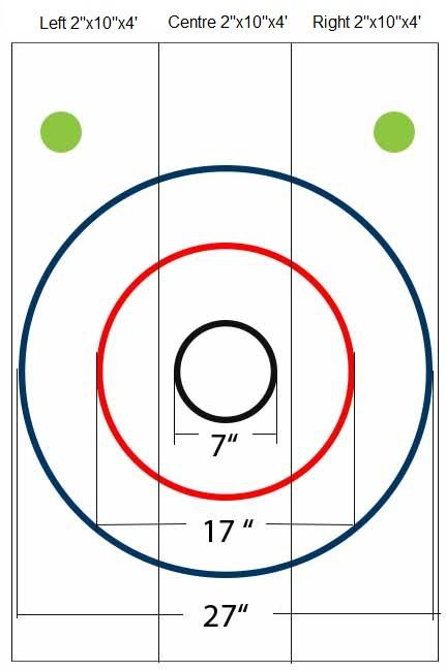
Safety
Safety is incredibly important when throwing axes. Although it is a potentially hazardous activity, some simple steps can be taken to ensure that no one gets hurt:
Stance
In order to throw accurately and consistently; a solid stance is advised when throwing.
A stable, solid stance is important when throwing. Try and keep your feet planted on the ground for the entire duration of your throw.
Alignment with the target is also important! This ensures that you don’t have to dynamically adjust your balance as you are throwing – this may reduce your consistency:
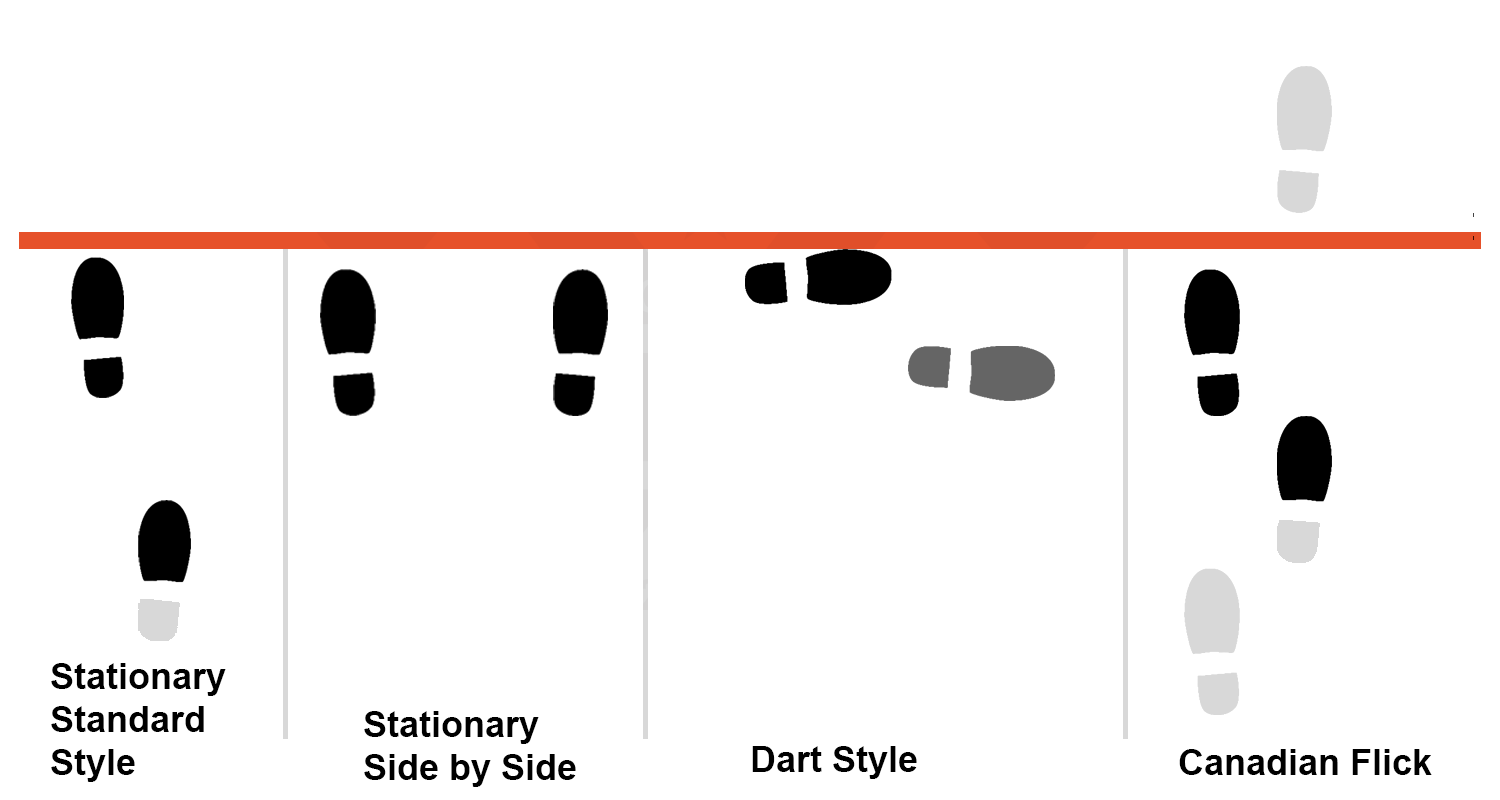
The Grip
Although there are several different axe grips, we would recommend using the basic hammer grip to begin with – it is the easiest to pick up and the most consistent for many people.
Hammer Grip
This grip is a basic grip used for turning throws of the axe. All other grips are generally modifications of the hammer grip. The axe handle is grasped as if you were holding the handle of a hammer hitting a nail.
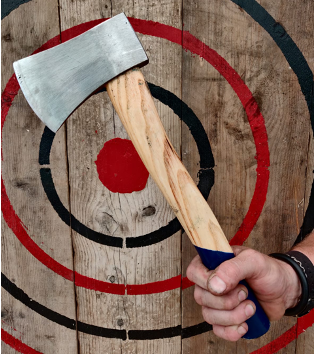
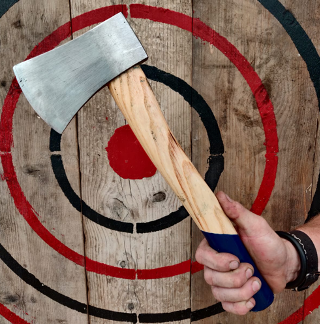
Modified Hammer Grip
The grip is similar to the hammer grip except the weapon is tilted forward. If the thumb is placed on the back of the handle. This will cause the rotation of the axe to be slowed, so rotation distance can be altered.
A second modification of the hammer grip is to place the thumb alongside the handle rather than on the back. This does not affect the rotation speed of the axe but will give greater control for a more experienced thrower.
Grip Position
Consistent grip position or location is critical to consistent throwing. Adjusting where on the handle you are throwing the axe from will affect the length of the throwing arc and therefore the rotation speed of the axe.
The Throw
There are two main throws that we recommend at Skeeters, the single-handed throw, and the double handed overhead throw.
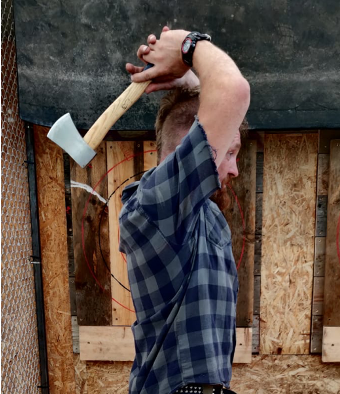
Double Handed Overhead Throw
The axe should be held lightly as you would a golf club or a dart to ensure you can easily release it at the end of your swing.
Bring the axe over your head as if you are doing a football throw-in.
Bring your arms forward, swinging the axe over your head, and release the axe when your arms reach eye level.
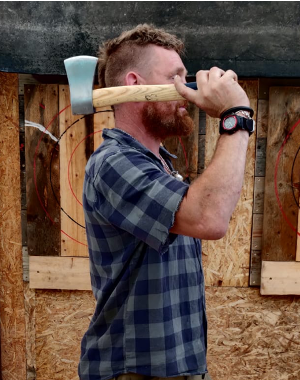
Single Handed Throw
For the single-handed throw, make sure you do not hold the axe too tightly, as this can cause the axe to rotate so that the head of the axe does not hit aligned to the wood grain, and will be less likely to stick in the target.
The throw is then made up of two distinct sections: the pull back and the throw
Firstly, pull the axe back beside your ear, ensuring the axe remains straight and aligned vertically (don’t twist it sideways). At the end of the pull back, the axe should nearly touch your shoulder.
From the position the axe is now in, swing your forearm forwards as if you are tossing a dart, releasing the axe when the handle is vertical.
Follow through
Following through the axe throwing motion after the axe has left your hand really aids in your accuracy and power delivery. Imagine you are reaching for something in your back pocket once the axe has been released.
Adjustments
After your throw is complete, now is time to have a think about what happened and correct your distance or stance.
Distance Adjustment
As the axe rotates in the air, there is an optimal distance you should be from the target. This distance depends a lot on your height, as well as your throwing style.
You are aiming for the axe to rotate almost exactly once for the distance in our range and to comply with the regulations set by most of the common axe-throwing leagues.
It is important to take a look at the floor where you are standing and make a note of your position. This is a helpful reference should you wish to adjust later or return to the same spot. Just like people, no two pieces of wood are the same! The floorboards in our range have a variety of individual knots, and markings that you can use as a helpful guide.
Depending on how the axe hit the target, you may need to step forward or backwards a little in response:
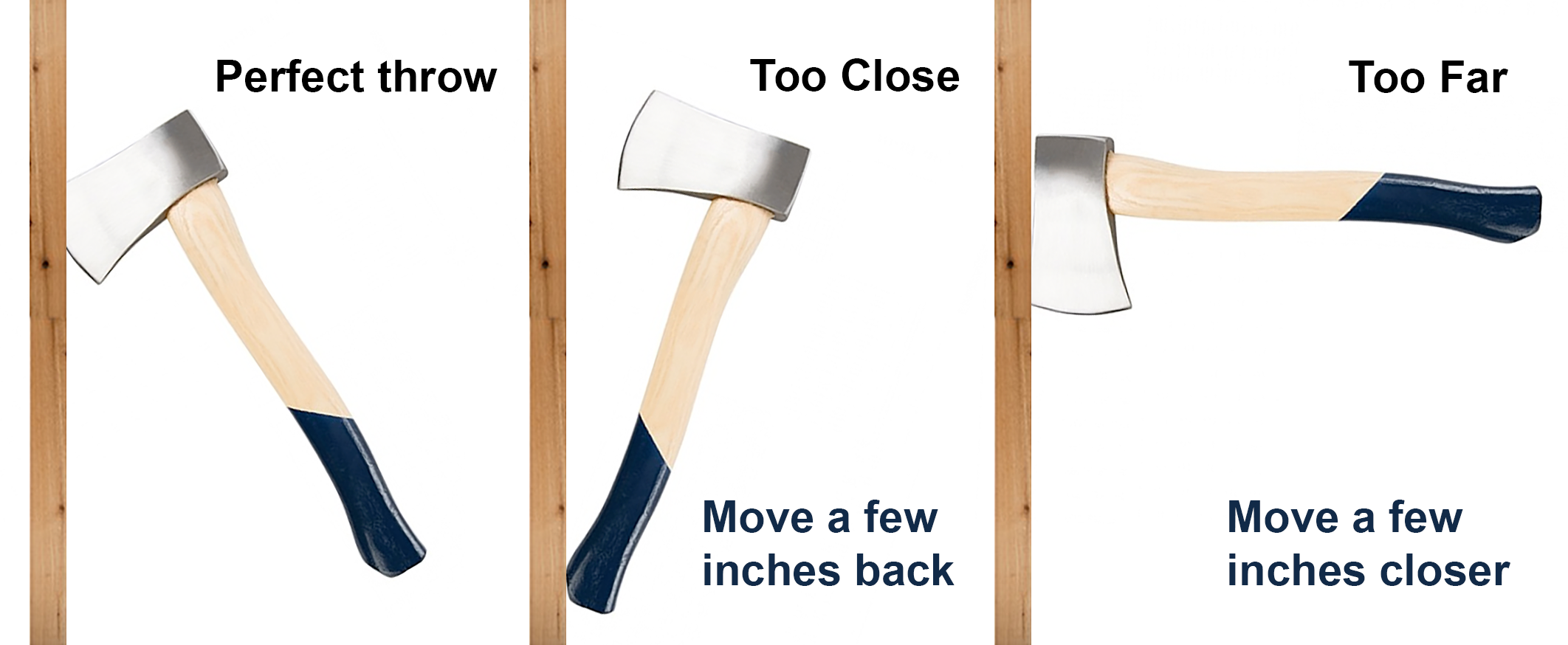
The perfect throw
If the blade hits at a slight angle to the board, as shown above, you have the perfect distance and you should continue to throw from that spot.
Under-rotation
If the handle of the axe hits the target first, you have under-rotated, and need to give the axe more distance in order to rotate the correct amount. Take a half step backwards (a few inches) and give it another go.
Over-rotation
If the top of the axe (the eye, or butt) hits the target first, you are standing too far away and should adjust your distance by stepping forward a half step (a few inches) to improve your success.
Let’s throw some axes
Ok, now that you’ve studied up on how to throw an axe perfectly… we’re sure you’re itching to give it a go. Book now and put that theory into motion!
